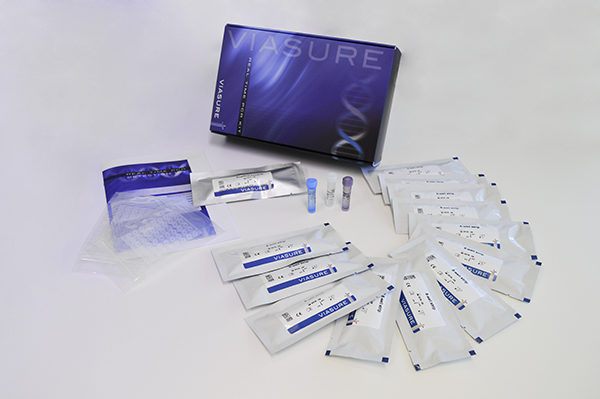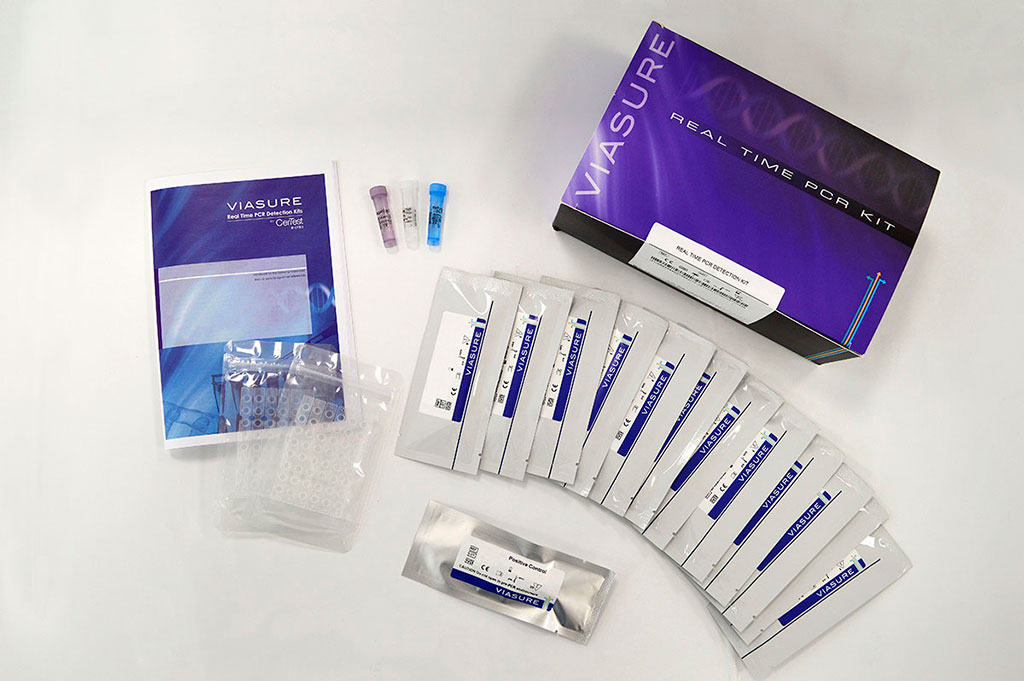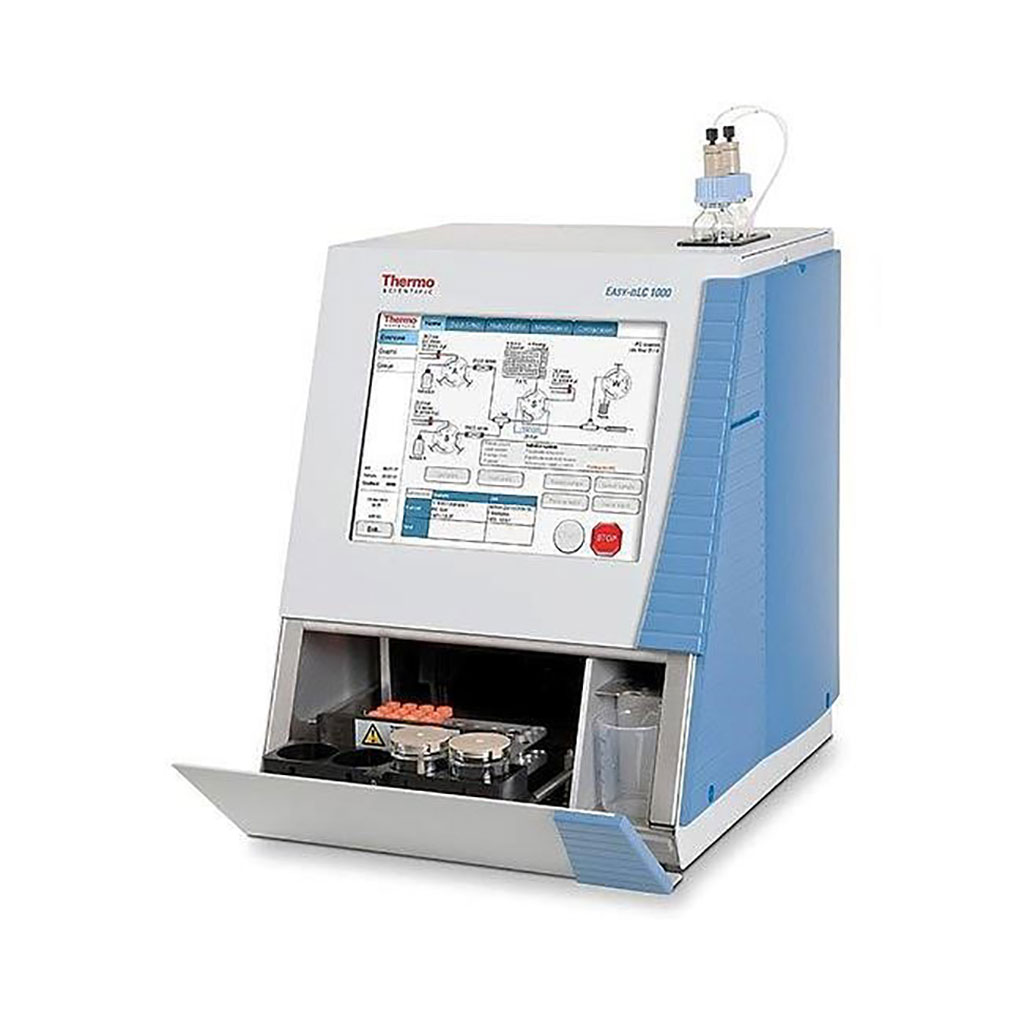Clinical Chemistry

Beckman Coulter Offers Latest Innovations in Urinalysis and Automation at AACC 2021
Beckman Coulter, Inc. (Brea, CA, USA) displayed its latest innovations in urinalysis and automation that are designed to improve lab workflow at the 2021 AACC Annual Scientific Meeting & Clinical Lab Expo. More...27 Sep 2021

Heparin-Binding Protein Levels Dramatically Increase in Acute Pancreatitis
Heparin-binding protein (HBP), also known as CAP37 and azurocidin, is a glycoprotein stored in azurophilic granules and secretory vesicles in neutrophils that is released upon neutrophil activation early in the systemic inflammatory response. More...25 Sep 2021


CerTest VIASURE HLA Celiac RT PCR Kit Enables Rapid Resolution of HLA Haplotypes Associated with Celiac Disease
CerTest Biotec (Zaragoza, Spain) has developed a simple and ready to use real-time PCR for the detection of the principal alleles of the HLA system and the subsequent determination of the DQ2 and DQ8 antigens associated with Celiac disease (CD). More...21 Sep 2021

New Multiplex Assay for Rapid Diagnosis of Atypical Pneumonia
CerTest Biotec (Zaragoza, Spain) has developed and validated the CE-IVD multiplex assay VIASURE C. pneumoniae, M. pneumoniae & L. pneumophila real time PCR kit for the detection of principal pathogens implicated in atypical pneumoniae. More...21 Sep 2021


Blood-Based Biomarker Predicts Onset of Symptomatic Alzheimer’s Disease
Alzheimer’s disease (AD) is a progressive neurodegenerative disorder, starting with a preclinical phase of normal cognition lasting approximately two decades. The formal diagnosis of AD dementia, relies on neuropsychological tests further confirmed by brain imaging and cerebrospinal fluid (CSF) sampling. More...16 Sep 2021
In Other News
Globotriaosylsphingosine Levels Measured in Fabry Disease Patients
PD-L1 Expression in Circulating Tumor Cells Investigated for NSCLC
High-Sensitivity Cardiac Troponin T Identifies Myocardial Injury with COVID-19
Point-of-Care Diagnostic to Identify G6PD Deficiency Evaluated
Various Serum Vitamin D Biomarkers Compared for Sarcopenia
Fecal Calprotectin Predicts Therapy Outcome in Ulcerative Colitis Patients
CSF biomarkers Compared for Down Syndrome and Inherited Alzheimer’s
Lipid Metabolism Affects GBA-Associated Parkinson's Disease
Insulin Resistance and T2D Associated With Gut Microbial Diversity
CSF Conversion Assay Identifies Lewy Body Disease Cognitive Impairment
Urinary Epidermal Growth Factor Investigated for Diabetes Nephropathy
ALDOA and FH4 Antibodies Associated with Cerebrovascular Disease
APOE Gene Influences Alzheimer's Symptoms, Biomarkers in Down Syndrome
Elevated PlGF Levels Found with Acute Fatty Liver of Pregnancy
Novel Adipokine Biomarker Reported for Insulin Resistance and Atherosclerosis
Two Inflammatory Proteins Linked with Slower Cognitive Decline
Biomarkers Diagnose and Predict Acute Pancreatitis
FABP4 Concentrations Quantified in Proliferative Diabetic Retinopathy
Two Immunoassays Compared for Determination of Serum Vitamin D
Monocyte Distribution Width Evaluated as a Sepsis Indicator
Plasma Neurofilament Light Validated Biomarker for Neurological Conditions
Diabetic Biomarkers Concordance Compared in South African Blacks
Plasma ACE2 Predicts Prognosis of COVID-19 Hospitalized Patients
The Clinical Chemistry channel updates the reader on tests, techniques, and research in the field - from routine assays to specialized tests on blood, urine, enzymes, lipids, hormones and more.











